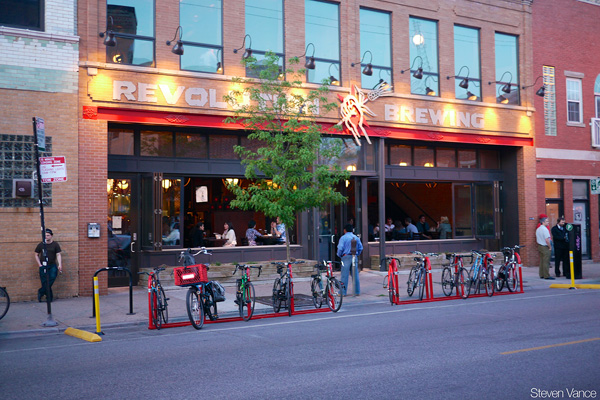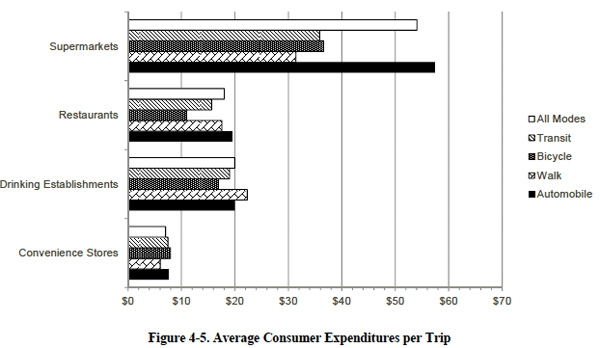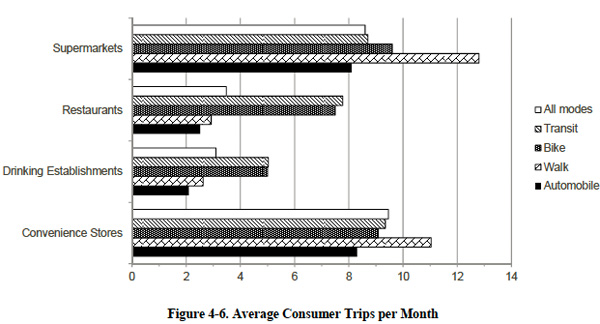
Photo: Steven Vance/CC by 2.0
Via aaroncynic at Chicagoist and John Greenfield at Streetsblog Chicago, Chicago's bike corral count is soon to expand to 25 (twice as many as New York, a quarter of Portland); Greenfield has a good explanation of the bureaucratic complications that go into installing a corral, which is just a large, on-street bike rack.
The city's corrals were pioneered by Revolution Brewery (see above), which installed the city's biggest corral in May after navigating a city that's unaccustomed to such projects: "we realized that we were treating people that wanted to put a bike corral in front of their business no differently than someone signing a $500,000 contract with the city, from the perspective of all the paperwork we were having them fill out." It makes sense that the biggest one would go in front of a brewer: in Portland's experience, a city competitive with Chicago as a bike and beer town, bars do quite well with cyclists—they don't spend as much per trip, which is good, but they also visit more often, eventually spending more per month than other commuters.

Makes sense: walking means you can drink more; biking means you can't have a designated driver. But biking also means it's easier to find parking and you don't have to wait for the bus. So it's a theoretically more convenient means of transportation, especially in dense areas.

it's a small sample size, but it lines up with prior research:
There are few studies in the US that document mode, expenditures and frequency of trips. A survey conducted in a commercial corridor in San Luis Obispo revealed that consumers that arrive by bike spend similar amounts yet visit more frequently than those who arrive by car (13). Similar results were found in downtown San Francisco, where people traveling by foot or transit spent less per visit at shops and restaurants than people in automobiles, but visited about twice as often spending more per month (14). Internationally, studies from Utrecht (15) and Amsterdam (16) in The Netherlands have found that cyclists spend less per visit to businesses but visit the business more frequently, resulting in higher spending patterns over time. In Seattle, researchers studied the mode choice of customers for grocery store trips, and found that stores in higher density neighborhoods are more likely to attract customers that arrive at the store using a non-automobile mode (17).
Which, in my own experience with biking versus other transit modes, makes total sense. It's much easier to hit multiple stops on a bike than it is on public transit, easier to haul acquisitions from multiple stops than walking, and easier to find parking at multiple places than driving. And easier to go somewhere on a whim—to a bar, say.


